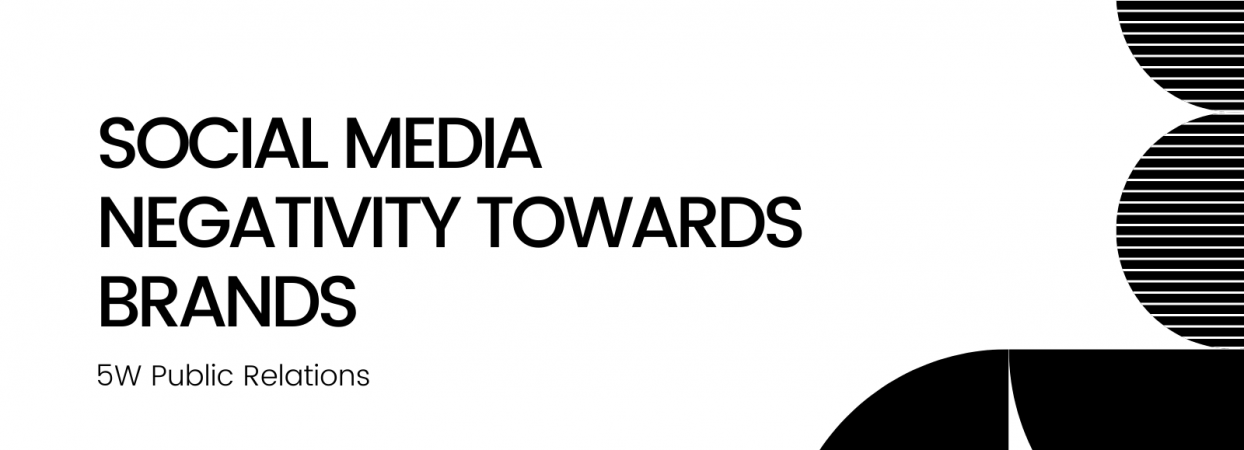There are different types of negative comments that companies can receive from the public, potential customers, and previous customers on social media platforms.
Depending on the type of negative comment, there are different ways that companies can respond to the people leaving those comments.
PR Overview
Complaints
The most common type of negative comment that most companies tend to receive on social media platforms are complaints from customers.
In fact, these types of negative comments are the most important to keep in mind, out of all types of negative comments that companies can receive. As the name suggests, these types of comments are from previous customers that have some sort of issue while using a company’s products or services.
The best way for a company to respond to a complaint from its customers is to be quick about it, and apologize for any inconvenience that the customer might have faced.
Then, businesses should verify the problem that the customer has been facing, and provide them with a potential way to solve it.
Threats
Another common type of social media comment that’s negative towards businesses is threatening comments that harass or even threaten the business, the employees, management or other leadership positions, and even the social media team from a business.
In fact, these types of comments might even end up targeting the company’s customers, or the followers of the company’s social media accounts.
Comments that are threatening tend to be violent in nature, either emotionally, physically, or otherwise. The best way for companies to respond to threatening comments is to simply not engage with them at all.
While it might be tempting to respond to a threatening comment with the business sharing its brand boundaries, or even informing that person about the terms of use of the social platform they’re using, it’s best not to do any of that.
If possible, the company should hide that comment from the comment section, screenshot it, and then report it either to the social media platform itself, the company’s legal team, or even local authorities when relevant.
Trolls
Trolls tend to be a menace on social media platforms, especially platforms like Twitter or Facebook. These types of negative comments can either be made by people, or even robots that simply want a company’s attention and sometimes to cause problems for a brand.
The goal of these types of comments is to get other people riled up and elicit an emotional response from them, which is why they tend to make untrue or outrageous statements on social media platforms.
When a comment like this appears, it often tends to detract from the company’s social media posts to redirect any attention onto the troll and their negative comments. Unfortunately, most of the time, these comments don’t come from genuine customers that have any sort of complaint and are simply annoying for everyone involved.
Although engaging with negative comments from trolls might be the first reaction that most people have when they see one, that’s precisely what trolls want. That’s why it’s best to ignore these types of comments completely when they’re identified, instead of engaging in any sort of way with them.
In the heat of a moment, it might feel good for a company to make a snarky response to a negative comment to put someone in their place.
However, most of the time it is best for companies to avoid responding to various types of negative comments they receive. However, when the time comes when a company should be responding, there are different ways that companies can, and should be responding to the negative comments that they receive.
Apologies
If a customer is complaining about a company’s products or services, or anything else, the best thing for a company to do in that situation is to apologize.
At the end of the day, it won’t matter if the complaint was or wasn’t warranted, it’s best for companies to simply apologize for whatever the situation might be. This is because plenty of times, it doesn’t make sense for companies to get into a discussion or an argument with someone in public, over a single complaint.
Additionally, other people are going to respect the brand a lot more if the business apologizes from the beginning of the interaction. In fact, if the complaint is about something that’s quite silly, other people will realize that too, and won’t think more of it.
Feedback
Any complaints that companies receive from their customers should be treated as feedback or constructive criticism. Most of the time, negative comments are simply feedback from customers that want to be heard, and then they want to know that the company has heard them.
That means that after a company has apologized for any inconvenience or negative experience a customer has faced, the business should let the customer know that it appreciates the feedback and will take their suggestions into consideration for future improvements.
However, it’s important to remember that the company needs to follow through on those criticisms.
All of them should be sent to the appropriate teams inside the company, so they can know how to navigate situations in the future. Lastly, when companies respond to negative comments in this way, they can easily and quickly turn any angry or unhappy customers into brand ambassadors.
Helping
If a company receives negative comments that don’t have a lot of context to them, or are even completely offensive, the best way for a business to respond in that situation is to apologize for the way the customer is feeling, and ask how the business can help make the entire situation better for them. In these types of situations, there are two possible outcomes. The first outcome is that whoever is complaining will end up replying to the business with something that can be dealt with, and then the company can proceed to take action.
The second outcome is that the customer will be so surprised that the company even responded in the first place, that they’ll have nothing more that they want to say.
However, at the end of the day, it’s important for the business to respond carefully, and offer to give help, so that other people see and understand that the business cares about all its customers.
The Role of PR in Transforming Consumer Finance
The world of financial services is experiencing a seismic shift. The old days of being defined by...
Tapping into The Metaverse to Drive E-Commerce Sales
The online shopping world is on the brink of a significant transformation as the metaverse...
What is the Upcycled Food Trend
In a world where food production and sustainability are paramount concerns, upcycled food has...



